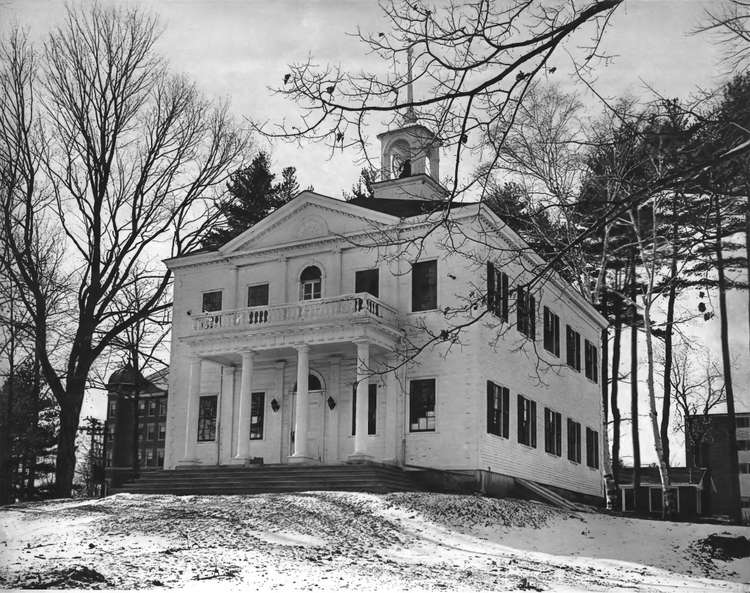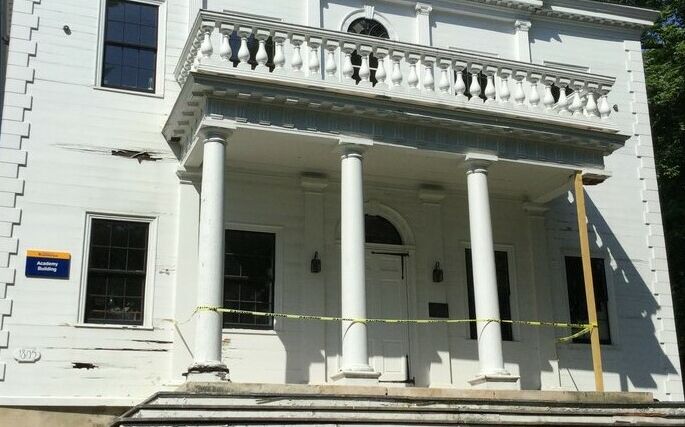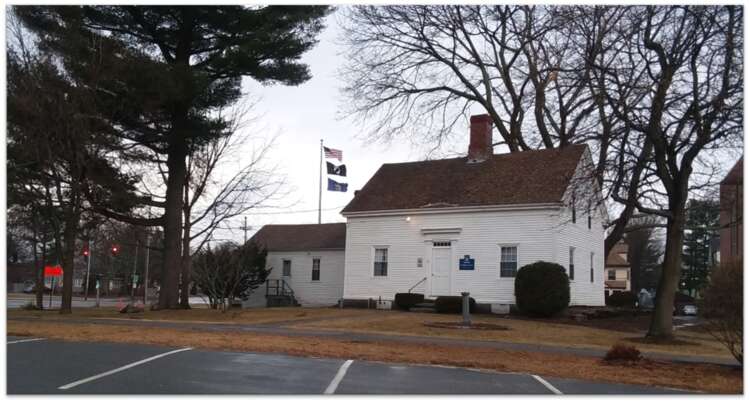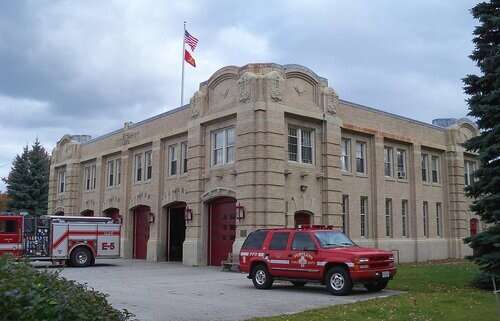
Gorham Academy, fire stations among Greater Portland Landmarks 'Places in Peril'
 Courtesy / Greater Portland Landmarks
Gorham Academy, on the campus of the University of Southern Maine, in Gorham, is on Greater Portland Landmarks 2019 Places in Peril list.
Courtesy / Greater Portland Landmarks
Gorham Academy, on the campus of the University of Southern Maine, in Gorham, is on Greater Portland Landmarks 2019 Places in Peril list.
Coastal communities impacted by rising sea levels, historic fire stations overtaken by modern technology and a paiar of early-19th-century buildings make up the Greater Portland Landmarks list of Places in Peril.
This is the fifth year the organization, "concerned that countless significant historic buildings in the Portland area are in danger of being lost," has released the list.
Similar to Maine Preservation's statewide Most Endangered Historic Places list, which was released earlier this month, it's "designed to shine a spotlight on threatened historic sites in greater Portland, creating awareness and rallying resources necessary to save the irreplaceable treasures that define our community."
Places that need immediate help are Gorham Academy (built in 1806), School Street, Gorham; Deering Farmhouse, 23 Brighton Ave., Portland; several fire stations, some slated for demolition; and historic coastal communities.
“Each of these Places in Peril helps to define our community’s history," said Sarah Hansen, executive director of Greater Portland Landmarks, in a news release: "Our goal in highlighting them is to actively find solutions to save them all."
Since its first list in 2012, 30 properties have been named. This year, seven from its original list are considered protected or saved, and six others have made progress toward preservation.
“Saving these properties can only enhance the vitality of greater Portland,” said Ed Gardner, Owner of Gardner Real Estate Group and Landmarks President. “We’ve seen over the last 20 years how important historic preservation has been to the economic growth of Portland and retention of property values.”
The list aims to build community awareness about the importance of the buildings and places and focus public attention on their significance in state and local history.
Other goals are to advocate for the preservation, protection, and in some cases, adaptive use of these properties "so that they can continue to play a vital role in defining our region’s unique architectural landscape, and provide guidance, get supporters together, identify resources and preserve, protect and rehabilitate them.
Here's a look at the properties, as described by Greater Portland Landmarks. For more information, visit Greater Portland Landmarks.

Gorham Academy, School Street, Gorham
Gorham Academy is one of the first six academies incorporated in what was then the District of Maine by the General Court of Massachusetts. Designed in 1806 by Samuel Elder in the Federal style, it quickly became a symbol of pride in the community, and today it is a focal point on the University of Southern Maine Gorham Campus. It was added to the National Register of Historic Places in 1972.
Although the 213-year-old building houses studios for the Art Department, it is plagued by deferred maintenance. The good news is, USM has initiated a planning process looking at the rehabilitation needs of the building.

Deering Farmhouse, 23 Brighton Ave., Portland
Built in 1807, the house is the last remaining structure of the more than 200-acre James Deering estate (1803) and is believed to be the last Federal period farmhouse within the city of Portland. Six acres of his estate were bought by Portland Junior College in 1947. Upon the college’s merger with University of Southern Maine, the house became the Alumni Office.
While the building is in good condition, it was last extensively renovated in the 1970s and is vacant. The University's 2019 campus master plan proposes to use the site as the location for a new graduate school and would require relocation or demolition. The building was recently determined eligible for listing on the National Register of Historic Places, but has no current local protection from demolition or alterations.

Historic Firehouses
Portland is one of the oldest fire departments in America, and established the first engine company, in 1768. Many stations in the area were designed as large open spaces that didn’t accommodate quarters for full-time fire personnel, but served other community needs. In some neighborhoods and towns, fire stations have served as voting stations or town offices, functioning as the civic heart of their communities.
Most fire stations in greater Portland were built during a different age of firefighting. Consolidation, changes in firefighting technology, and a need for accommodations for staff are challenges threatening some stations. Many have narrow doors or short bays unable to accommodate new equipment, requiring some departments to close, relocate or demolish stations and build larger buildings.
Some specific issues:
• In South Portland, the fire station at 360 Main St. will be demolished for several reasons: mold, lack of sufficient living space, insufficient bay width and little ability to expand the building to accommodate new equipment. The new replacement station will also result in the closure of the engine house in Thornton Heights (1939).
• In Portland, an October 2017 study recommended closing or replacing stations in East Deering (1957), North Deering (1966), Riverton (1971), Rosemont (1951), and Central Station on Congress Street (1924/5). The Bramhall Station on Congress Street (1964) was also recommended for a major remodel or closure.
As the Portland Fire Department approaches its 240th year of service, Landmarks suggests the department and surrounding communities to look closely at the legacy reflected in community stations.Several fire stations have been sold and repurposed into functional commercial space, so alternatives are available.

Historic Coastal Communities of Greater Portland
Many of greater Portland’s most treasured prehistoric and historic sites sit along the coast and its intersecting rivers and streams — areas at high risk because of rising sea levels. The sites include historic seaside communities, residential neighborhoods, wharves, forts, lighthouses and 2,000 documented shell middens that contain valuable information and prehistoric cultural artifacts.
The waterfront in the greater Portland region has been inhabited for thousands of years, and through the development of natural and maritime resource economies, people have dramatically shaped its geography.
Greater Portland communities are already experiencing recurrent flooding, erosion and increasingly intense storms —threats that are projected to increase as the Gulf of Maine warms and expands. The continued damage and destruction of local historic landmarks and sites could be detrimental to greater Portland’s personality and sense of collective history. Greater Portland will face substantial revenue losses because our regional economy depends so heavily on historic districts, properties, and parks to attract tourism, new residents, and new businesses.
As concerns about climate change mount, historic preservation and the conservation of existing resources are key to developing a strategy of resiliency, risk management and adaptation.










0 Comments